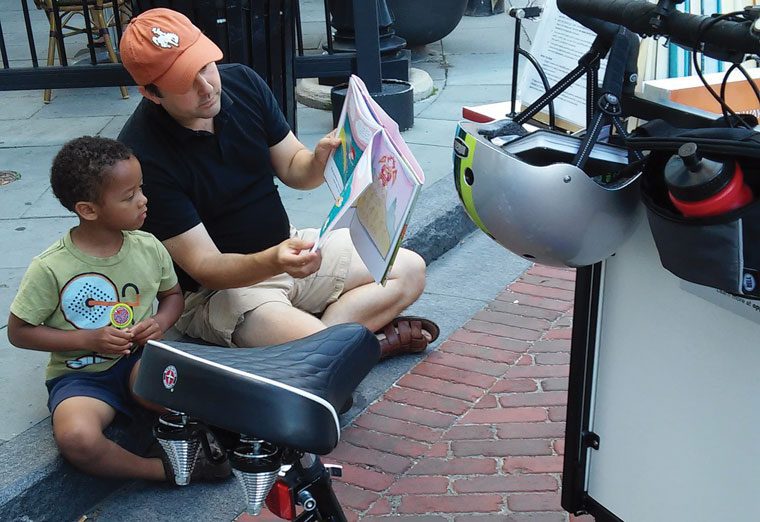“When children cannot find themselves reflected in the books they read … they learn a powerful lesson about how they are devalued in the society of which they are a part.”
—Rudine Sims Bishop, “Mirrors, Windows, and Sliding Glass Doors” (1990)
Bridging diversity gaps
This spring, a new Children’s Services task force with diverse staff representation embarked on an audit of about 500 “go-to” picture books used in library storytimes. The goals? To determine gaps in representation regarding gender, race, disability, body image, language, and more. And to bridge those gaps by replacing some books with more inclusive ones exploring similar topics and themes.
The team is asking questions like: Do the text and illustrations promote a positive or negative body image? Do they reinforce gender or racial stereotypes? Does the author identify with a marginalized group? Is the work bilingual? If a character has a disability, is that their only characteristic?
“Our team has a variety of viewpoints, with diversity in age, gender, race, and storytime experience,” said Early Literacy Librarian Shelley Harris. “We’re all coming with our own experiences, and having great conversations about books that have been part of our collection for years. Some we all love, some we have already flagged to remove, and some we debate.”
This audit is part of a larger initiative to examine all collections at the library, to be intentional about creating a truly diverse collection, in all available formats, true to the library’s Collection Strategy Statement.
#WeNeedDiverseBooks
We Need Diverse Books, a grassroots organization that advocates changes in the publishing industry, notes that statistics on the diversity gap in children’s literature can be traced back to at least 1965, when a three-year review showed that only 6.7 percent of children’s books had one or more African-American characters.
Despite our nation’s growing diversity, the American publishing industry hasn’t caught up, as recent statistics and studies show. For example, multicultural publisher Lee & Low Books reported in 2016 that although people of color make up 37 percent of the U.S. population, only 11 percent of children’s books published from 1994 to 2016 contained multicultural content.
Harris noted that the Cooperative Children’s Book Center studies the diversity of every book they receive. Of the 698 received in 2017, only two starred kids with disabilities.
“A picture book character was four times as likely to be a dinosaur than a Native American child,” she said. “It’s so frustrating. But until publishing catches up to where it ought to be, we can still ensure that we are buying and sharing the published books that reflect our community so that every family can see themselves at the library.”

